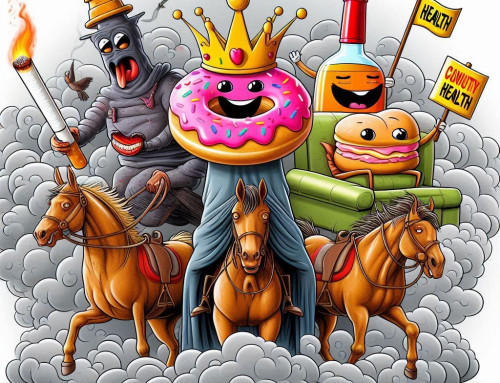The mugger jumps out of nowhere, demanding your wallet and threatening you and your date. You, in turn, jump into action! You will not be a victim today! You knock the knife out of his hand, rifle off a couple combinations to the muggers head and abdomen and then follow it up by throwing him to the ground with a perfectly executed hip toss, taking his knife, protecting yourself and making your date beam with excitement over you, her new hero! Ok, stop day dreaming, here’s what’s really going to happen. You’re going to attempt to knock the knife out of his hand, but end up cutting yourself. You’ll attempt a combination of kicks and strikes, but will have forgotten all of your technique and revert back to your patented wild right hook repeated over and over, missing its target more times than not. You’ll then go in to throw him, you’ll make a mistake like you’ve done in class multiple times and will stop in the middle of it to correct the technique…just like in class. At that time, the mugger will grab your wallet and attempt to run, only to be dropped by your date who just pepper sprayed him. Smooth as broken glass there superman!
When, or if, the time comes that we need to put our martial arts skills into action, we will go into autopilot and perform the way we train. “We don’t rise to the level of our expectations ““ we fall to the level of our training” ““ Archilochus. So you have to ask yourself, how well do you train? Do you train properly? We all make, or have made, mistakes in our training. I want to list a few do’s and don’ts that can help you perform as efficiently as possible if that time comes, but first, let me explain the whys.
As mentioned in my article, “We can be heroes…but NOT for one day”, our state of mind is dramatically different when confronted with a stressful situation. Our body is under control by a completely different system behind the wheel. During day to day life and normal activities, our body makes use of the PNS (parasympathetic nervous system). This system takes care of daily activities that make use of cognitive processing and fine or complex motor skills. Think of it like this, our “security team” is just sitting back watching the monitors as the janitors and maintenance crew do their jobs to keep the place working properly. When a stressful situation hits however, such as our life being threatened, the SNS sympathetic nervous system) takes over. This is also known as the “fight or flight system”, or as I prefer to call it, the “fight or flight or freeze system”. Think of this one as the alarms in the building have gone off and the security team has been sent out into action as the janitors and maintenance crew runs and hides. Many bodily functions cease while the SNS is in control. This includes digestion, fine and complex motor skills, and even cognitive thought processing. You’re essentially left with instincts and training. So if you’re training consists of casually going through movements, or only doing parts of the technique and not completing the action since its “inconvenient” during class, then guess what? You’ll do the exact same thing when the time comes to use that technique. If you train by taking your partner down but not finishing them, or controlling them, and you just take them down and then help them back up, you will do the EXACT same thing in the street! You will take them down, then you will offer your hand out to help them up….and then they say thanks as they begin to pummel you and finish their objective. Stories of ridiculous mistakes such as this run ramped in law enforcement due to poor training methods. Such as the officer who wrestled a gun away from a perpetrator with excellent technique…only to hand the gun right back to him to be shot. Why? Because that’s the way he trained, every time he practiced disarming during training, he would hand the gun back to his partner so he can practice again. It became instinctive. You may ask, “How could he possibly think giving the gun back to the perpetrator is a good idea?” The answer is, there was no thought. That part of the brain is not always functioning during a life threatening moment like that, only instincts are in control.
I feel it necessary to mention something that’s slightly off topic, but still under the same umbrella as it’s fairly important and is becoming a growing problem in our world that isn’t very well understood or addressed. That’s the issue of violent video games (or violent media in general). I’m not one to cry out that we need to ban these games; I’ve played a few in my day and enjoyed them. But there is an issue that needs to be addressed. Many studies have been done over all of the mass shootings in this country over recent years, in particular, school shootings. There was a stunning realization in these studies meant to understand what happened and how it can be prevented. They discovered that many of these school shootings had an incredibly high number of head shots “kill shots”. Not just random shots that hit anywhere. The accuracy was high enough to impress even the highest level professional shooters who train on a regular basis. The stunning part however is that these kids never trained to shoot like this. At least not with real guns.
As it turns out, they were highly proficient at video games that involved shooting. Specifically games that gave more points for these “kill shots” as well as the amount of people killed. These video games trained them to be efficient killers. And the evidence is overwhelming. The army, as well as many other organizations, makes use of video games to train their soldiers in scenarios such as this as it is cheaper than firing real bullets at real targets. There are even cases of those who aim to kill only one person, but go into autopilot and continue shooting at whatever moves, just as they were taught in these games, including killing their own friends and family. Only to be stunned after they are detained that they had killed people they loved and not understanding why. So should we ban these games? I don’t know. But it’s not the games that send these kids out to kill. It just trains them. There’s nothing wrong with being efficient and accurate with a weapon. It would come into play in a time of self defense. Without the intent, the training will never come into play. We need to educate our children. Listen to our children. Instill discipline into their lives. All of these students involved in mass shootings had something in common; they lacked any form of discipline such as sports or martial arts. Life isn’t easy, and it doesn’t seem to be getting any easier on them psychologically.
There was, however, a great temporary solution presented in the book, “On Combat” by Dave Grossman and Loren Christenson. Research shows that many of these autopilot killers stopped dead in their tracks from one simple act. That act was that of an adult yelling out to stop. It seems too simple, but think about it. A kid is sitting down playing his video game and mom yells out, “Johnny, come take out the trash!”. What’s the kid do? He hits pause, and takes out the trash. That one simple act of yelling out to stop is like hitting the pause button. Its mind blowing how effective and powerful this autopilot system we call the SNS can be. Unfortunately, it does not discriminate. It can be used for good or bad. It’s up to us and society to instill the education and discipline needed to send it in the right direction.
So, with all of that said, how do we train ourselves so that our autopilots are trained properly? There are numerous things that need to be done, but I’m going to get you started with a list of do’s and don’ts.
The do list:
- Train in the gym as you would perform in the street. Make sure you follow through with your techniques! When doing a takedown, make sure you follow it up completely to a position where you are in full control and/or have made your partner tap out. Release the pressure, but continue to hold the position for a moment more before jumping back up. Do this on a regular basis but not all the time. Understand that sometimes the situation calls for a quick drop of the opponent then on to the next opponent.
- Do practice full force on a regular basis when it comes to strikes/kicks. This can simply be on a heavy bag or on a well padded partner, but it’s imperative to do so! If you practice pulling your punches so you don’t hurt your partner all the time, then you will do the same in the street!
- Know your limits and weaknesses. Then strengthen or learn to protect them as they will be targeted in a real altercation. Let go of your ego and practice the stuff you are not good at. Ignoring it can lead to the loss of your life.
- Do spar! It’s an absolute must. I’ve had, and have, students that just loathe sparring. Whether it’s because they don’t feel they are good at it, they think it’s too violent, or some other excuse. If you’re intent is just to have a social hobby, then that’s perfectly fine. But if you’re intent is to learn self defense, then you must spar. It’s the closest thing you have to real combat and the only way to fully prepare for something is to do it, or something as close to it as possible. Understand though that limits must be shown. Self defense is about protecting the body, if you spar so hard that you are injured all the time, it kind of defeats the point, doesn’t it?
- Be efficient. Many traditional arts are full of long drawn out fancy techniques. There is nothing wrong with these techniques, they have their purpose, but understand they are not always efficient. Concentrate on quick, precise techniques with the highest chance of success.
- Do put yourself into stressful situations! Testings, tournaments, demos, sparring the biggest baddest guy in the gym, these are all great ways to truly test and teach yourself how to perform under stress.
The don’t list:
- Don’t let a failed technique stop you! I see students do this far too often. They initiate a technique, make a mistake and then stop and start over. Don’t do this! Even if you royally mess up, keep going. Alter the technique if needed, but get your partner to the ground and control them, make it successful. The only exception is if you, or your partner, are in danger of being injured.
- Don’t be a lazy attacker! This too bugs me when I see a student stand straight up and down, feet next to each other and reaching out holding a choke or a grab of some sort attempting to represent an attacker. No attacker will do this!!! Grab with intent! Yes, we start easy and relaxed when we first learn the techniques, but once you have it learned, it’s time for your attacker to find ways to resist and be a pain in the ass, just like a real attacker in the street!
- Don’t avoid working with the guy/girl that frustrates you and never turns the right way or cooperates the way you want. This is where the real learning is at! Everyone is different in their actions and responses to techniques. You must learn them all to be fully prepared!
- Don’t be erratic with your training. Dropping in for a month of training and then stopping for 3 months is not going to work. You need constant, ongoing training to both learn and retain those instinctive skill sets.
While this isn’t everything it takes to be more efficient and successful with training your self defense skills, it’s a good start. Next time you’re in class, just ask yourself, “Is this helping or hurting me in my training?”







Leave A Comment